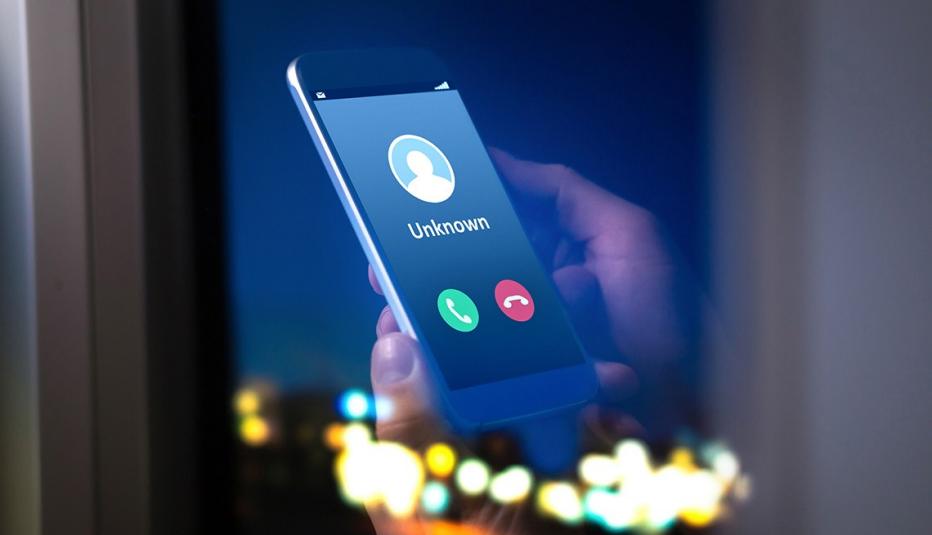AARP Hearing Center
According to a new AARP survey, an overwhelming majority of U.S. adults find robocalls “annoying” (94%) and “disruptive” (90%), but few are taking action to protect themselves.


Robocalls Are Getting Worse
Robocalls—autodialed calls that play a recorded message when you answer—have legitimate uses. You might get a call warning you that severe weather is on the way or that school will be closing early. But as the technology has gotten cheaper and more sophisticated, scammers have noticed. Since 2016, the volume of calls has increased from just over 29 billion to nearly 48 billion calls in 2018, and one in ten (11%) adults surveyed has fallen prey to a telephone scam at some point. According to the Federal Trade Commission, phone scams cost U.S. consumers $429 million last year alone.
How the Scam Works
When deciding to answer a call, most of us rely on caller ID, but we rarely answer a call with no caller information. To get you to pick up the call, scammers use “spoofing”: They fake the area code or the prefix that appears in your caller ID to make the call seem local and make you think someone you know is calling. More than half of U.S. adults (59%) surveyed said that they were very or somewhat likely to answer a call with a local area code, and almost half (44%) said they’d probably answer a call with an area code and prefix where family or close friends live.
Once you answer, you get a recorded message with some incentive to act quickly, without thinking: “You won the lottery!” or “Your credit card has been compromised!” U.S. adults surveyed are more likely to respond to calls with some negative message, such as credit card (39%) or identity theft (29%). More than half of respondents (51%) said that they would likely ask for more information in a negative scenario threatening a loss of some kind.
To fix the problem, of course, the bad guys will demand a credit card number, bank account number, or some other information they can use to ruin your day—or worse.
How We Can Beat Them
Though they find the calls annoying, most respondents (77%) do not use a robocall blocking service or report telephone scams to authorities (84%). To protect yourself, here are a few actions you can take:
- Register your phone number(s) with the National Do Not Call Registry.
- Use a robocall blocking app on your phone.
- Report scam calls to the Federal Trade Commission or your state attorney general.
- Contact your member of Congress. Nearly all (93%) respondents agree that lawmakers should do more to combat this problem.
Learn how to spot and avoid illegal robocalls and other scams. Sign up for biweekly Watchdog Alerts on the AARP Fraud Watch Network.
State Reports
Connecticut
- Robocall Spoofing Survey (PDF)
- Infographic (PDF)
- Annotated Questionnaire (PDF)
Pennsylvania
- Robocall Spoofing Survey (PDF)
- Infographic (PDF)
- Annotated Questionnaire (PDF)
Vermont
- Robocall Spoofing Survey (PDF)
- Infographic (PDF)
- Annotated Questionnaire (PDF)
Washington State
- Robocall Spoofing Survey (PDF)
- Infographic (PDF)
- Annotated Questionnaire (PDF)
Methodology
This survey was conducted by NORC at the University of Chicago on behalf of AARP. For the national survey of U.S. adults, data were collected using the AmeriSpeak® Panel, a probability-based panel developed by NORC at the University of Chicago. AmeriSpeak is designed to be representative of the U.S. household population.
Interviews for this survey were conducted in English between April 9 and April 18, 2019, with adults ages 18 and older, representing the 50 states and the District of Columbia. Respondents were randomly selected from the AmeriSpeak Panel using area probability and address-based sampling. A total of 1,852 adults completed the survey.
For more information, please contact Jennifer Sauer at jsauer@aarp.org or Alicia Williams at arwilliams@aarp.org. For media inquiries, please contact media@aarp.org.































































